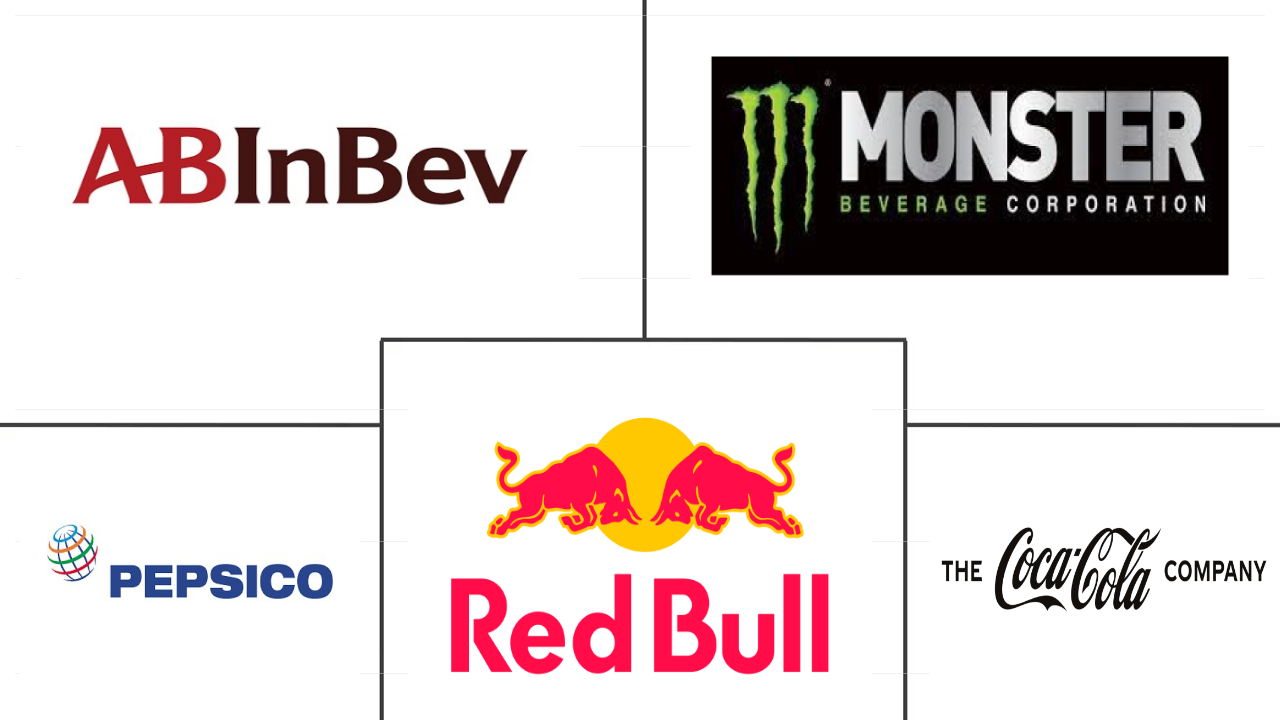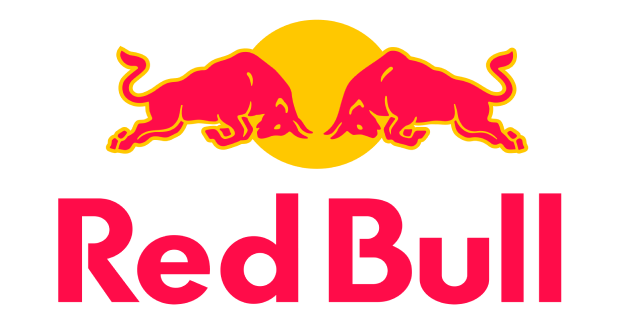Market Size of india energy drinks Industry
| Icons | Lable | Value |
|---|---|---|
|
|
Study Period | 2018 - 2030 |
|
|
Market Size (2024) | USD 0.74 Billion |
|
|
Market Size (2030) | USD 1.01 Billion |
|
|
Largest Share by Soft Drink Type | Traditional Energy Drinks |
|
|
CAGR (2024 - 2030) | 5.46 % |
|
|
Fastest Growing by Soft Drink Type | Natural/Organic Energy Drinks |
|
|
Market Concentration | High |
Major Players |
||

|
||
|
*Disclaimer: Major Players sorted in no particular order |
India Energy Drinks Market Analysis
The India Energy Drinks Market size is estimated at 0.74 billion USD in 2024, and is expected to reach 1.01 billion USD by 2030, growing at a CAGR of 5.46% during the forecast period (2024-2030).
0.74 Billion
Market Size in 2024 (USD)
1.01 Billion
Market Size in 2030 (USD)
4.26 %
CAGR (2018-2023)
5.46 %
CAGR (2024-2030)
Largest Segment by Soft Drink Type
30.99 %
value share, Traditional Energy Drinks, 2023
Unique and innovative product offerings by domestic manufactuers in response to the growing health and fitness consciousness consumers is driving the segment growth
Largest Segment by Packaging Type
50.41 %
value share, PET Bottles, 2023
The portability and affordability of PET bottles alongside the growing investment in PET bottle recycling projectsto support circular economy is drivign the segment growth
Fastest-growing segment by Soft Drink Type
6.94 %
Projected CAGR, Natural/Organic Energy Drinks, 2024-2030
Additional health benefits due to the composition of botanical extracts, natural sweeteners, and organic fruit juices drives the consumer preference for organic energy drinks
Fastest-growing segment by Packaging Type
6.66 %
Projected CAGR, Glass Bottles, 2024-2030
The rising importance of sustainable packaging in the food and beverage industry with the influence of government policies is estimated to drive the segment growth
Leading Market Player
44.20 %
market share, Red Bull GmbH, 2022

Red Bull GmbH has emerged as the market leader due to extensive investments in advertisement capaigns and brand ambassador programs for effective brand awareness
The rising prevalence of diabetes and perennially favorite flavors expected to drive the demand for the energy drinks market in the future
- Energy drinks hold a significant market share, registering a growth rate of 9.22% by value from 2020 to 2023. While perennial flavor favorites like lemon, lime, orange, and berry continue to be preferred choices among traditional energy drink consumers, major energy drink brands like Red Bull and Monster Energy have been taking chances on new flavors, with watermelon and mango being the top flavors for new product development.
- Sugar-free energy drinks hold a significant market share in the Indian energy drinks market. The segment registered a growth rate of 17.05% by value from 2020 to 2023. The increasing diabetic population is inclining toward sugar-free energy drinks in the market. In India, an estimated 77 million people above the age of 18 years are suffering from diabetes, and nearly 25 million are prediabetics in the country. Low-carb energy drinks are designed to provide sustained energy and help accelerate the metabolic state. Therefore, this factor is driving the growth of the Indian energy drinks market.
- Natural and organic energy drinks are the fastest-growing energy drink types consumed in the country. They are projected to register a CAGR of 6.94% by value from 2024 to 2030. Consumers, particularly millennials and the younger generation, are becoming more conscious of their dietary choices and actively seeking organic and natural alternatives across the energy drink categories. India has the largest youth population in the world, with more than 65% of its population aged under 35 years old. These health-focused energy drinks often rely on natural, botanical sources of caffeine like guarana, yerba mate, and green tea extract. Functional ingredients are expected to appeal to consumers and expand the reach of energy drinks over 2024-2030.
India Energy Drinks Industry Segmentation
Energy Shots, Natural/Organic Energy Drinks, Sugar-free or Low-calories Energy Drinks, Traditional Energy Drinks are covered as segments by Soft Drink Type. Glass Bottles, Metal Can, PET Bottles are covered as segments by Packaging Type. Off-trade, On-trade are covered as segments by Distribution Channel.
- Energy drinks hold a significant market share, registering a growth rate of 9.22% by value from 2020 to 2023. While perennial flavor favorites like lemon, lime, orange, and berry continue to be preferred choices among traditional energy drink consumers, major energy drink brands like Red Bull and Monster Energy have been taking chances on new flavors, with watermelon and mango being the top flavors for new product development.
- Sugar-free energy drinks hold a significant market share in the Indian energy drinks market. The segment registered a growth rate of 17.05% by value from 2020 to 2023. The increasing diabetic population is inclining toward sugar-free energy drinks in the market. In India, an estimated 77 million people above the age of 18 years are suffering from diabetes, and nearly 25 million are prediabetics in the country. Low-carb energy drinks are designed to provide sustained energy and help accelerate the metabolic state. Therefore, this factor is driving the growth of the Indian energy drinks market.
- Natural and organic energy drinks are the fastest-growing energy drink types consumed in the country. They are projected to register a CAGR of 6.94% by value from 2024 to 2030. Consumers, particularly millennials and the younger generation, are becoming more conscious of their dietary choices and actively seeking organic and natural alternatives across the energy drink categories. India has the largest youth population in the world, with more than 65% of its population aged under 35 years old. These health-focused energy drinks often rely on natural, botanical sources of caffeine like guarana, yerba mate, and green tea extract. Functional ingredients are expected to appeal to consumers and expand the reach of energy drinks over 2024-2030.
| Soft Drink Type | |
| Energy Shots | |
| Natural/Organic Energy Drinks | |
| Sugar-free or Low-calories Energy Drinks | |
| Traditional Energy Drinks | |
| Other Energy Drinks |
| Packaging Type | |
| Glass Bottles | |
| Metal Can | |
| PET Bottles |
| Distribution Channel | ||||||
| ||||||
| On-trade |
India Energy Drinks Market Size Summary
The India energy drinks market is experiencing a robust expansion, driven by evolving consumer preferences and demographic trends. The market is characterized by a significant shift towards sugar-free and natural energy drinks, catering to the health-conscious segment of the population. With a large portion of India's population under the age of 35, there is a growing demand for products that align with modern, active lifestyles. Major brands like Red Bull and Monster Energy are innovating with new flavors to capture consumer interest, while the increasing prevalence of diabetes is steering consumers towards sugar-free options. The market is also witnessing a rise in the popularity of organic and natural energy drinks, which are appealing to millennials and younger consumers who prioritize dietary choices.
The competitive landscape of the Indian energy drinks market is fairly consolidated, with a few key players dominating the scene. Companies such as Anheuser-Busch InBev, Monster Beverage Corporation, PepsiCo, Red Bull GmbH, and The Coca-Cola Company hold a significant share of the market. These companies are actively expanding their product offerings and exploring new flavors to maintain their market positions. The market's growth is further supported by strategic promotions and product innovations, such as PepsiCo's limited edition Sting Blue Current. However, regulatory factors and health concerns related to high caffeine consumption continue to influence market dynamics, prompting industry players to adjust their product formulations accordingly.
India Energy Drinks Market Size - Table of Contents
-
1. MARKET SEGMENTATION (includes market size in Value in USD and Volume, Forecasts up to 2030 and analysis of growth prospects)
-
1.1 Soft Drink Type
-
1.1.1 Energy Shots
-
1.1.2 Natural/Organic Energy Drinks
-
1.1.3 Sugar-free or Low-calories Energy Drinks
-
1.1.4 Traditional Energy Drinks
-
1.1.5 Other Energy Drinks
-
-
1.2 Packaging Type
-
1.2.1 Glass Bottles
-
1.2.2 Metal Can
-
1.2.3 PET Bottles
-
-
1.3 Distribution Channel
-
1.3.1 Off-trade
-
1.3.1.1 Convenience Stores
-
1.3.1.2 Online Retail
-
1.3.1.3 Supermarket/Hypermarket
-
1.3.1.4 Others
-
-
1.3.2 On-trade
-
-
India Energy Drinks Market Size FAQs
How big is the India Energy Drinks Market?
The India Energy Drinks Market size is expected to reach USD 737.48 million in 2024 and grow at a CAGR of 5.46% to reach USD 1.01 billion by 2030.
What is the current India Energy Drinks Market size?
In 2024, the India Energy Drinks Market size is expected to reach USD 737.48 million.

